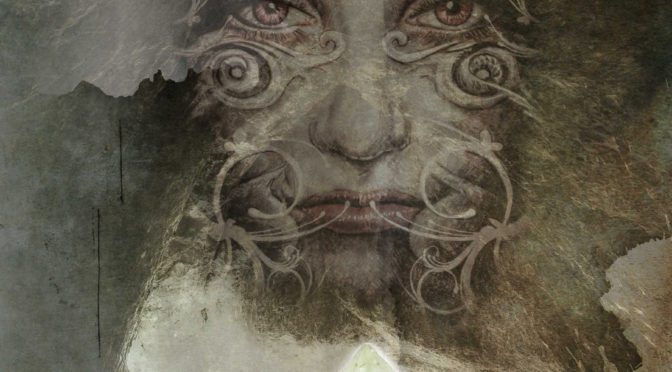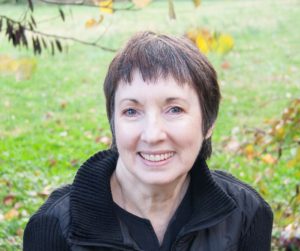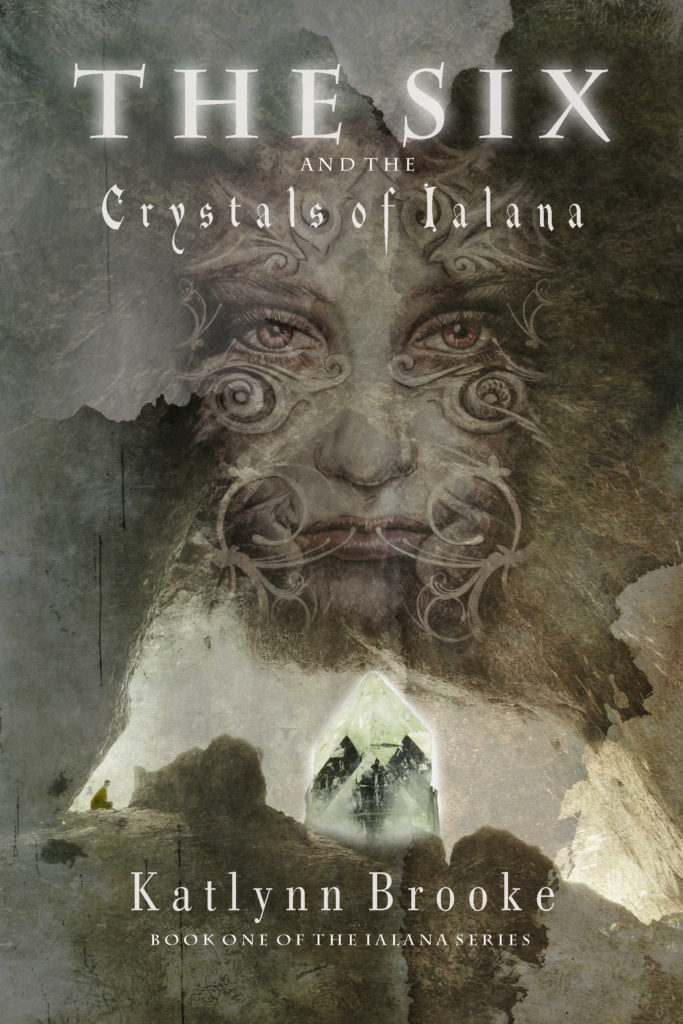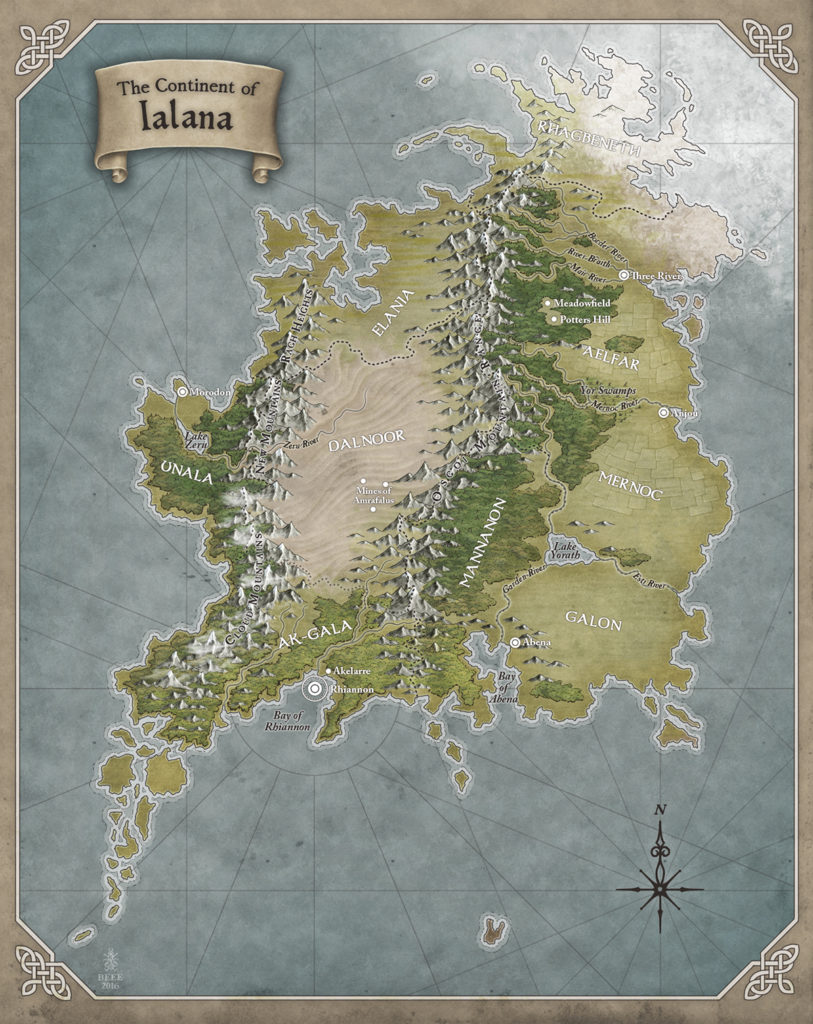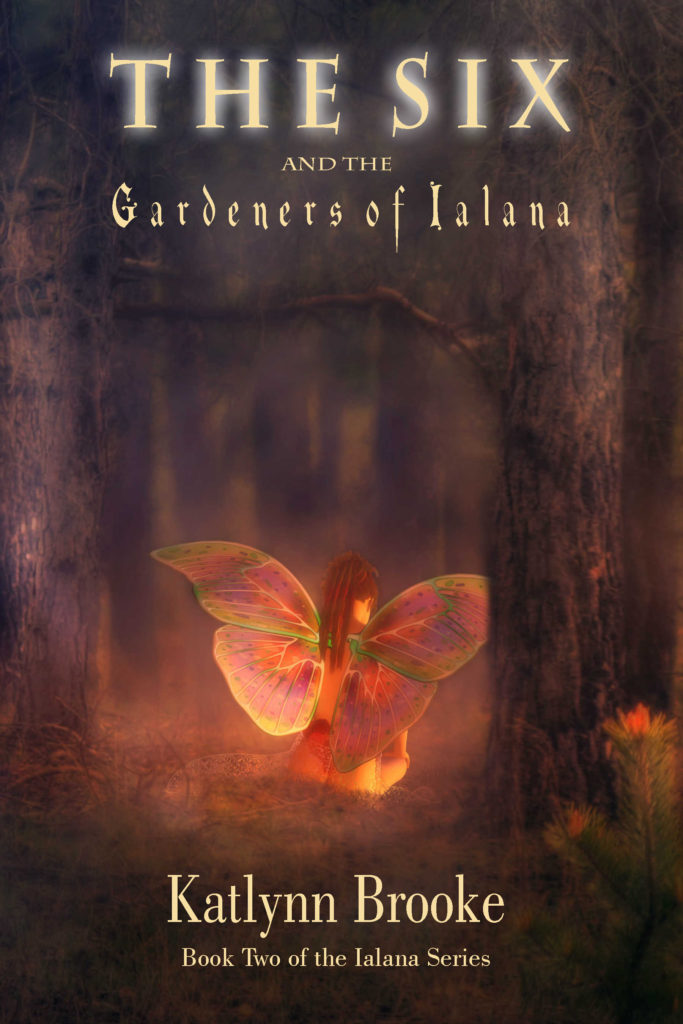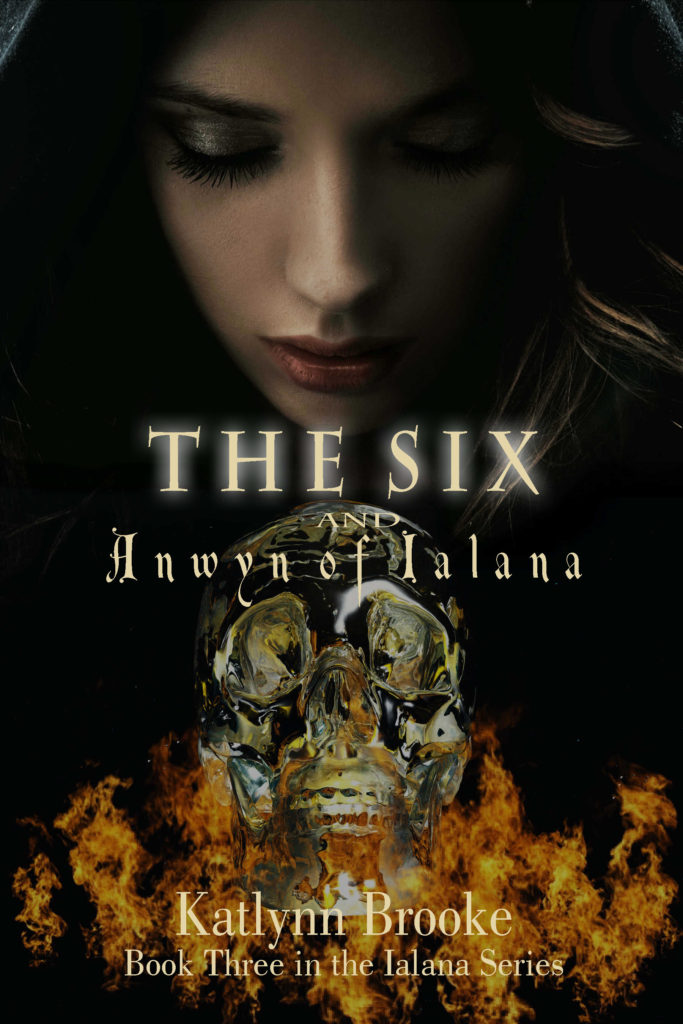Today, we have the awesome privilege of bringing to you a conversation with the author of The Six and the Crystals of Ialana, Katlynn Brooke. We had the opportunity to talk with Brooke for a good while, and we have to say it was an enlightening and entertaining discussion.
Without further adieu, our conversation with Katlynn Brooke:
Tellest: How did you get the inspiration for Eglog? He seems like the single most despicable person I have ever read about in a very long time.
Katlynn Brooke: I am so glad to hear that! I have done a lot of research on psychopathic personalities. I felt that in a world where there is no law, or at the best, unfair laws, that those placed in positions of power are, by necessity in this chaotic world, malignant personalities. A kinder, gentler man in charge of forced army recruitment would be considered ineffective. Striking terror into hearts and minds is exactly how a malignant and putrid man would handle his job, and Eglog was a master. Worldwide, we can still see these types in powerful positions today: that when given free rein, Ids run amok, and they’re actually no better than Eglog.
But fasten your seatbelt, Eglog is not alone. There are more of that ilk to come throughout the Ialana series! Not all are as over the top, but they’ll keep you awake at night.
T: Ialana seems at times so familiar and yet so different from our world. How did you come up with this realm?
KB: I have always been fascinated and inspired by tales of Atlantis. While Ialana is not Atlantis, it is based on what I imagined the legendary continent to look like; particularly the City of Rhiannon. Like Atlantis, the ringed city of Rhiannon, to the inhabitants of northern Ialana, was only a legend. Few knew for certain if it actually existed. It is our world, but in a time so long past that all history and all traces of it have been lost. Today, we might still find remnants of this lost civilization in our present time in the form of legends, myth, and strange creatures.
T: So in a way, this is almost fictional history? This isn’t something that takes place on a fabricated planet—it is Earth presented from beyond recorded history? That is an interesting twist!
KB: It could be one of our possible pasts. I did not want Ialana to exist on a fictional planet. I wanted the reader to be able to identify with the familiar. For example, the seasons are the same, the animals and flora are the same, and except for the mutant creatures and differently shaped or placed continents, it is Earth. I refer to other continents in this world (such as Afarre, which is Africa), so some of our more familiar locations co-exist with Ialana.
T: Each of the characters in this novel have such exotic names. What steered you in that direction instead of a more common name? And how do you keep such good track of them all?
KB: I researched many ethnic, ancient, or legendary names, and some of them are just my own—made up names. I picked the names that seemed to “fit” each character best. Names are important in shaping who a person may become. Like words, name sounds carry a mathematical frequency formula or encryption that our subconscious minds recognize. It is the language of the universe. On a conscious level I don’t know the formula, but I can “hear” the frequency or vibration of each name, along with that of the personality of each character. I know instinctively which name will fit a character, and which will not.
T: There’s almost a metaphysical, philosophical bend to this tale. Your comment about the frequency in the character names kind of blends into that as well. Where did those notions come from, and how did you determine that you’d focus a little more clearly on that?
KB: You are correct. This series goes a lot deeper than the average fantasy book. We write from our base of knowledge, and everything we have ever learned becomes our story. There are fantasy authors who deliberately leave that stuff out, and it’s just “magic”. It’s a simpler concept and I see the value in that, but they most likely don’t have the foggiest idea why their broomsticks fly or their wizard’s wands create spells.
Early in my life (teen years) I began to question things. I felt that there was so much more we didn’t know about the world and the universe, way more than what we do know. I began to seek out the older paths of knowledge, studying Hinduism, Buddhism, Sufi-ism, and then, like gateway drugs, a short hop to teachings of various new age paths, paths that at least tried to explain the mysteries of the universe and creation.
While I do not pretend to be a scientist, or even say that my books are correct scientifically, I like to create a world where an understanding of the mechanics of creation exist, even if most of its inhabitants still think of it as sorcery. Pockets of knowledge remain, and I feel that one day we, on our modern world, will regain this knowledge, but only if we acknowledge that it indeed does exist, and that magic and science are not incompatible.
T: So it wouldn’t be so far off to say that your book series is to fantasy the way Dr. Strange is to Marvel superheroes…
KB: I look forward to the movie of Dr. Strange that is rumored to be coming soon! Yes, that would be an apt analogy. Dr. Strange’s creator tapped into the ‘60’s counter-culture of youth who were fascinated with Eastern Mysticism. Since I am a product of that generation, it has definitely influenced what I write, too. I could have written only for the market tropes, what is currently out there, but I wanted something that went deeper yet was also entertaining, much like Dr. Strange!
T: The way that your characters are introduced, from all over the countryside, is an interesting breath of fresh air. We get to see things from their points of view and understand their scope of the world in new ways with each chapter. What made you decide to follow them from their own origin instead of adding them as the other characters met or found them?
KB: I wanted to acquaint the reader with each character before they came together so that once they met up there would be as little backstory to fill in as possible. I wanted to keep the pace moving along with each character, so that to the reader each one would feel real, as if they already knew them. I have multiple characters who show plot development from their point of view rather than consigning them to lesser roles and backstory. It was a gamble on my part, but I’ve had some positive reviews on this strategy and I feel it’s paid off.
T: I would have to agree with that. A lot of times, the characters we meet feel like they’re sidekicks along for someone else’s ride. The Six seem to be fully developed, and it makes you feel more strongly for each of them.
KB: Thank you. It is what I hoped would happen. As the series progresses, the Six become even more real and three dimensional. I had one reviewer say he felt like he had made six new friends!
T: That’s not a bad way of putting it. You give each character enough time to feel like they’re this fully realized person, and it really makes it easier to root for them. Even the villains have their own presence that you sometimes miss in other stories.
KB: I love developing my villains as much as I do my heroes. Most of them have a back-story, a past that motivates them in the book’s present, and a few of them may even possess the capacity for growth and healing, just as my heroes do. There are, however, some villains who are just not able to heal, and those are the most despicable, damaged personalities I can conjure up, such as Eglog and Amrafalus. If a character can’t grow, they become dispensable.
T: There’s also a deeper relationship with these people that goes beyond just what we see in their villages. Was it a challenge to describe these pasts while simultaneously developing their young lives?
KB: Not really a challenge at all. Their pasts just seemed to flow naturally into their present, and they came into their current lives with an arsenal of abilities that were rooted in their past. It felt like a natural progression.
T: Your characters are also guided by their dreams, almost to the point where it feels like seeing into the future. How did you raise the stakes to make these pseudo-premonitions carry as much of a sense of danger and intrigue as you could?
KB: The dreams my six main characters have are not actually dreams in the ordinary sense; they are memories that have been reactivated. The characters, in their past lives, knew their mission had failed, and they must come back again and pick up where it left off, so they programmed the memories to activate in the form of dreams and premonitions as soon as they were physically able to pick up their mission again. Of course, it was not a perfect science, and only the strongest emotions were able to penetrate the conscious mind, such as fear and danger.
T: A handful of the characters are seemingly fate bound by several things. The first is obviously the “dream” that brings them all together. But another component is the thought of marriage. Nearly all the heroes consider or are forced to consider this prospect—what made it so prevalent in this story?
KB: On a large and extremely dangerous continent where the human population is still fairly sparse, reproduction of the human species is paramount to survival of the species. The population of Ialana lives in the equivalent of the dark ages of Europe, but only with fewer people, and tribal or clan survival is what motivates the rules of their societies. It is every parent’s desire to see their child married, even at an early age. Being alone, without family, means death. They mean well, and do not understand if their child or teen does not desire this fate. It is a case of “We know what is best for you.” Arranged marriages, forced marriages, and general pressure to get married is the norm on Ialana, and airy-fairy stuff, like dreams, are not conducive to survival.
T: With which character do you most closely relate?
KB: I think nearly all of the Six, in some way, but mostly Tegan. She and I possess a similar sensitivity to life, and she is an unlikely hero. Her fears and anxieties often control her, but she is much stronger than she gives herself credit for.
T: You introduce some very interesting races to the mix as well. Where did you get the inspiration for these amalgamations?
KB: When I was a teen we used to go to movies at our local club where they would show old black and white serial cliffhangers each week before the main movie. These were made during the 1930’s, 40’s and 1950’s, and they were cheesy as they sound, but we loved them! I don’t remember all their names anymore, but there was one about Atlantis (it might have been part of a Buck Rogers serial). In this cliffhanger, the DNA of animals was mixed with human DNA to create mutants. It used to frighten the bejeezus out of me—kept me awake at nights—so when I created the Trueni, this was my inspiration. There are other mutant beasts in my books even scarier than the Trueni. These mutants are lethal. The sting of the Arrach (scorpion men) could kill in a few minutes, and the wolf-men (Werewolves) ate or killed anything that moved. These, no doubt, are inspired by some of those old movies too! The mutants were formed eons ago by genetic experimentation gone crazy.
T: Speaking of your upbringing, you’ve had an interesting one even beyond the philosophical and religious research. You grew up in Africa and then later made sojourns in India and Indonesia. That had to have made some impact on your storytelling imagination.
KB: It certainly did! Growing up in Africa during the 50’s and 60’s, especially living in the bushveld for most of my youth, we had to create our own entertainment. I come from a very creative family. My mother was an artist, and an aspiring author and playwright, and my father dabbled in it too. Instead of television, which we did not possess, we wrote and produced our own plays, taping them on an old, squeaky reel-to-reel recorder, or even filming them on my mother’s old 8 mm movie camera. We preferred horror stories, and produced “The Creaking Door” tales inspired by an old radio show. Each one of us would write a bit, and pass it on to the next person who would continue the tale.
Later in life, I did live in India for two years, and Indonesia for three years. I got to meet a lot of interesting people, visiting many places tourists don’t often get to. I feel travel expands one’s horizons in a way that nothing else can, and when I write, I am often transported back to certain locations that I would like my readers to see, hear, and smell as well as I can.
T: Are there any other places that you can think of that you’d like to go to that might inspire more of your fantasies and adventures?
KB: I have always wanted to visit Ireland. Part of Ialana, the province of Aelfar, is reminiscent of Ireland, and although I have never been there, I can imagine it very well. A setting, similar to the Pacific northwest coast of the US, is part of my fourth book in the series, and the beginning (or continuation, however you like to look at it) of a new direction for Ialana. For the most part now I am an armchair traveler, but the value of actually experiencing a country with all one’s senses is something that I will always appreciate.
T: Back to your menagerie… What is your favorite creature, race or hybrid that you’ve created in the Ialana series?
KB: It’s kind of like asking a mother which child she loves best, but I do love my shape-shifters. I have two of them, and the second one appears in The Six and the Gardeners of Ialana. She is The Raven, and can shape-shift into a bird. She has as much capability as my first shape-shifter, Irusan, but they are polar opposites in nature and intent. While Irusan is wise and benign, The Raven has experienced extreme template distortion and she has deteriorated into a power-hungry monster, but a beautiful, and seductive one. I went to school with her, I think. She is an archetype all of us are familiar with!
T: I can’t wait to read about her, and I’m sure all our readers are just as eager!
KB: There is a lot to look forward to in this series. It is not a static series. Although my main characters, and even some more minor ones, appear and reappear throughout the three books, I do bring in new blood occasionally. I also push some characters into the background while I bring others out more.
In my fourth book, which will be out this year, I push the Six into the background more, and bring out some very interesting characters we have not yet seen. There are still undiscovered races, and parts of Ialana that no one is aware of.
T: Is there anything else you’d like readers of your series to know about?
KB: I tend to push the first book the most because it is the foundation of the series. It is essential that a prospective reader read this book first, and then the others, in the order they were written, because, like Lord of the Rings, the characters will then make more sense.
Each book in the Ialana Series is a continuation of a saga, but unlike The Lord of the Rings, for e.g. there are no cliffhangers at the end of my books. Plots are neatly wrapped up and the next book picks up where they left off with an entirely new story line. Personally, I dislike cliffhangers at the end of a book, even if within a series.
I would also like readers to know that while my books go deeper into metaphysical and paranormal theory than is usual in the fantasy genre, I do not expect anyone to take my ‘explanations’ or theories presented as any kind of established truth, or that I make any claims to understand the laws of the universe. I can only see things from my perspective, and it may differ greatly from how others see things.
My main intent is to entertain, not alter anyone else’s perceptions of reality, or beliefs. I want readers to feel as if they know the characters, and the world I have built, and I want them most of all to care. I hope I have accomplished this.
One last bit of news, too: The Six and the Crystals of Ialana should be releasing soon in audio form on Amazon. It should be completed sometime near the end of June, and it will be awesome. A first rate narrator, Jeff Hays, is narrating it. If this is successful, I will be putting them all out on audio. I am very excited about it. Jeff is an amazing narrator, and he composes his own music too.
I can say that Brooke has managed to do just that. I’d like to thank her once again for taking the time to talk to us about her growing series, and what helped to shape it. If you’d like to get started with the Ialana books, you can dive into The Six and the Crystals of Ialana right away. Pick it up on Amazon today!
Michael DeAngelo
Latest posts by Michael DeAngelo (see all)
- Fantasy Promo – Quinine - July 25, 2024
- Sigil Art – Grim’s Hold - July 24, 2024
- Fantasy Promo – Light the Shadows (Under Elfhame’s Stars) - July 24, 2024
